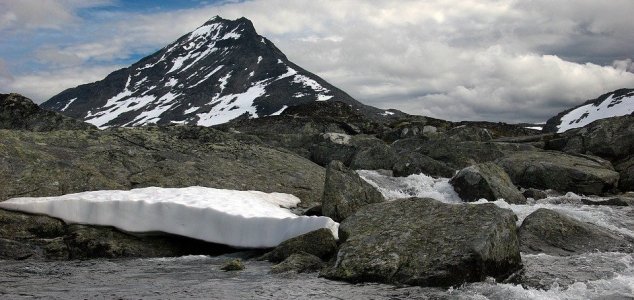Archaeology & History
April 16, 2020 · 5 comments
5 comments

Norway's Jotunheimen National Park. Image Credit: trondmyhre4 / Pixabay
Described as a 'dream discovery', the pass dates back around 1,800 years to the Nordic iron age and was used for centuries by farmers and travelers making their way through the mountains.
"It probably served as both an artery for long-distance travel and for local travel between permanent farms in the valleys to summer farms higher in the mountains, where livestock grazed for part of the year," said study co-author and archaeologist James Barrett from the University of Cambridge.
Due to the number of people who made their way through the pass, the area is littered with hundreds of artefacts dropped and later claimed by the ice over an extensive period of time.
These items, which date from the Roman Iron Age to the medieval period, include snow shoes, a woollen tunic, a knife, wooden skis, arrows, horseshoes, horse bones and a broken walking stick adorned with an inscription that reads "Owned by Joar."
In total, more than 800 items have so far been retrieved from the site.
Despite its popularity however, the pass saw less and less use from around the 14th Century, possibly due to the Black Death - a pandemic that killed millions of people all across the world.
"The pandemics inflicted a heavy toll on the local population," said archaeologist Lars Pilo, co-director of the Secrets of the Ice Glacier Archaeology Program. "And when the area eventually recovered, things had changed. The Lendbreen pass went out of use and was forgotten."
Source: Scientific American | Comments (5)
Lost viking mountain pass reveals its secrets
By T.K. RandallApril 16, 2020 ·
 5 comments
5 comments
Norway's Jotunheimen National Park. Image Credit: trondmyhre4 / Pixabay
Melting ice in Norway has revealed a long-lost Viking-era mountain pass brimming with archaeological discoveries.
The pass, which has been slowly uncovered thanks to rising global temperatures, is situated at the Lendbreen ice patch in Norway's central mountains to the northwest of Oslo.Described as a 'dream discovery', the pass dates back around 1,800 years to the Nordic iron age and was used for centuries by farmers and travelers making their way through the mountains.
"It probably served as both an artery for long-distance travel and for local travel between permanent farms in the valleys to summer farms higher in the mountains, where livestock grazed for part of the year," said study co-author and archaeologist James Barrett from the University of Cambridge.
Due to the number of people who made their way through the pass, the area is littered with hundreds of artefacts dropped and later claimed by the ice over an extensive period of time.
In total, more than 800 items have so far been retrieved from the site.
Despite its popularity however, the pass saw less and less use from around the 14th Century, possibly due to the Black Death - a pandemic that killed millions of people all across the world.
"The pandemics inflicted a heavy toll on the local population," said archaeologist Lars Pilo, co-director of the Secrets of the Ice Glacier Archaeology Program. "And when the area eventually recovered, things had changed. The Lendbreen pass went out of use and was forgotten."
Source: Scientific American | Comments (5)

The Unexplained Mysteries
Book of Weird News
AVAILABLE NOW
Take a walk on the weird side with this compilation of some of the weirdest stories ever to grace the pages of a newspaper.
Click here to learn more

Support us on Patreon
BONUS CONTENTFor less than the cost of a cup of coffee, you can gain access to a wide range of exclusive perks including our popular 'Lost Ghost Stories' series.
Click here to learn more
United States and the Americas
UK and Europe
Israel, Palestine and the Middle-East
Russia and the War in Ukraine
Total Posts: 7,767,899 Topics: 325,001 Members: 203,754
Not a member yet ? Click here to join - registration is free and only takes a moment!
Not a member yet ? Click here to join - registration is free and only takes a moment!

































Please Login or Register to post a comment.